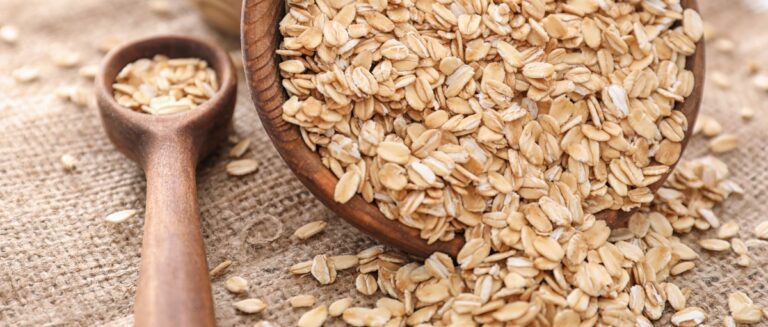Have you ever struggled to open a jar or grip a pen due to stiff, achy hands? You’re not alone. According to the CDC, over 48% of all adults aged 65 and older experience arthritis. This debilitating condition can make everyday tasks challenging and diminish one’s quality of life.
But here’s the good news: you have the power to prevent or delay the onset of hand arthritis. By understanding the risk factors and embracing simple lifestyle changes, you can keep your hands strong, flexible, and pain-free for years to come.
We’ll explore the different types of arthritis that commonly affect the hands and the key strategies for preventing them. From maintaining a healthy weight to using proper ergonomics, we’ll provide practical tips and expert advice to help you take control of your hand health.
So, let’s explore how you can preserve your grip and enjoy all the activities you love without letting arthritis hold you back.
Understanding the Types of Arthritis That Affect the Hands
Before we dive into prevention strategies, it’s important to understand the different types of arthritis that can impact your hand health. While there are over 100 forms of arthritis, the two most common types affecting the hands are osteoarthritis and rheumatoid arthritis.
Osteoarthritis (OA)
Osteoarthritis is the most widespread form of arthritis, affecting 500 million people worldwide. Osteoarthritis occurs when the cartilage—the smooth tissue that cushions your joints—starts to break down.
Common symptoms of hand OA include:
- Pain and stiffness in the affected joints
- Swelling or tenderness
- A grating or crackling sensation when moving the joint
- Decreased range of motion
In the hands, OA commonly targets the finger joints, especially at the tips of the fingers, and the base of the thumb.
Signs of Early Osteoarthritis
Early symptoms may include:
- Joint stiffness, especially in the morning or after rest
- Mild pain during or after movement
- Tenderness or swelling around the joint
- A “grinding” or gritty sensation when using your hands
- Limited range of motion
Recognizing these signs early can help you take action before symptoms worsen.
Rheumatoid Arthritis (RA)
Rheumatoid arthritis is an autoimmune disease that causes the body’s immune system to attack the joints, resulting in inflammation, pain, and stiffness. RA often starts in the small joints of the hands and wrists, and it can affect the same joints on both sides of the body.
Rheumatoid arthritis Symptoms in the hands may include:
- Pain, swelling, and stiffness in the affected joints
- Warmth and redness in the joint area
- Decreased range of motion and difficulty performing tasks
While less common, other types of arthritis, such as psoriatic arthritis and post-traumatic arthritis, can also affect the hands. Psoriatic arthritis is linked to the skin condition psoriasis and can cause joint pain and swelling. Post-traumatic arthritis may develop after a hand injury instead of wear and tear, like other forms of arthritis.
By understanding these different types of arthritis, you can be better equipped to recognize early signs and symptoms and take steps to prevent or manage the condition.
Factors That Increase the Likelihood of Developing Hand Arthritis
While anyone can develop hand arthritis, certain factors can increase your risk. By understanding these causes of arthritis, you can take steps to mitigate them and reduce your chances of developing the condition.
- Age: At what age can you get arthritis in your hands? There’s no definitive answer, but the risk of developing hand arthritis, particularly osteoarthritis, increases with age. As you grow older, the cartilage in your joints naturally begins to break down, leading to pain and stiffness.
- Gender: Women are more likely than men to develop hand arthritis, with nearly one in two females developing it by the age of 85, especially osteoarthritis and rheumatoid arthritis. Hormonal changes, particularly during menopause, may play a role in this increased risk.
- Genetics and Family History: If you have a family history of arthritis, you may be more likely to develop the condition yourself. Researchers have identified specific genes, such as human leukocyte antigen (HLA), that can increase the risk of rheumatoid arthritis.
- Obesity: The Arthritis Foundation suggests that the more you weigh, the more stressed and damaged your joints become, including those in your hands. This increased pressure can cause the cartilage in your joints to break down more quickly, leading to osteoarthritis. Maintaining a healthy weight is crucial for reducing your risk of developing hand arthritis.
- Joint Injuries and Overuse: One of the causes of arthritis is previous hand injuries, such as fractures or ligament tears, which can increase the risk of developing post-traumatic arthritis by seven times! Repetitive motions from certain jobs or hobbies can also wear down your joints over time. This includes work like:
- Construction
- Manufacturing
- Computer-intensive tasks (typing, data entry, etc.)
By understanding these risk factors, you can take proactive steps to reduce your chances of developing hand arthritis.
How to Prevent Hand Arthritis in Hands
While you can’t change your age or genes, there’s a lot you can do to protect your hands.
These simple lifestyle adjustments can help you prevent or delay arthritis, reduce pain, and maintain your mobility. By incorporating these strategies into your daily life, you can help prevent or delay the onset of hand arthritis.
- Maintain a Healthy Weight: Carrying excess weight doesn’t just affect your knees—it impacts your finger joints too. More weight = more pressure on your joints, which speeds up cartilage breakdown and raises your risk for osteoarthritis. Aim for a balanced diet and regular exercise to support a healthy body mass index (BMI).
- Quit Smoking: The chemicals in cigarette smoke trigger inflammation in the body, which is the leading cause of arthritis. Smoking increases your risk of rheumatoid arthritis and worsens inflammation throughout your body. It also reduces the effectiveness of treatment if you already have arthritis. Quitting smoking can improve both joint health and overall well-being.
- Prevent Injuries and Overuse: Protect your hands during physical activity or repetitive work. Prevention now can save your joints later.
- Use wrist guards or gloves during sports
- Take frequent breaks if you work on a computer
- Avoid gripping or twisting motions for long periods
- Practice Good Posture and Ergonomics: Maintaining proper posture and using ergonomic techniques can help prevent hand arthritis, especially if you spend a lot of time typing or using devices.
- Keep wrists straight
- Elbows at a 90-degree angle
- Use ergonomic keyboards, mice, and tools
- Take breaks to stretch and shake out tension
- Stay Physically Active: Regular exercise is essential for maintaining healthy joints and preventing hand arthritis. Low-impact activities like swimming, cycling, and walking can help improve flexibility and reduce stiffness and pressure on your joints. Aim for 30 minutes a day, most days of the week. Don’t forget hand-focused activities like:
- Grip strengthening
- Wrist rotations
- Stretching
- Perform Hand Exercises: Incorporating specific hand exercises into your daily routine can help improve strength, flexibility, and range of motion in your fingers, thumbs, and wrists. Some simple exercises include:
- Making a fist: Slowly bend your fingers into a fist, hold for a few seconds, then release and spread your fingers wide.
- Thumb stretch: Gently pull your thumb back toward your wrist, hold for a few seconds, then release.
- Wrist circles: Make circular motions with your wrists, both clockwise and counterclockwise.
Aim to perform these exercises for a few minutes each day, gradually increasing the duration and repetitions as your hands become stronger and more flexible.
How to Prevent Arthritis at an Early Age
While prevention is key, early diagnosis and treatment can significantly improve the management of hand arthritis and maintain quality of life. If you experience persistent pain, stiffness, or swelling in your hands, it’s essential to consult with your healthcare provider promptly. Early diagnosis, along with proactive care, is key to understanding how to prevent arthritis in hands even before symptoms progress
During your appointment, your doctor will perform a physical exam, assessing your joints for signs of inflammation, tenderness, and range of motion. They may also recommend imaging tests, such as X-rays or MRIs, to visualize the condition of your joints and surrounding tissues. In some cases, blood tests may be ordered to check for specific markers of inflammation or autoimmune disorders.
If you are diagnosed with hand arthritis, your healthcare provider will work with you to develop a personalized treatment plan. Treatment options may include:
- Medications: Over-the-counter pain relievers like acetaminophen or nonsteroidal anti-inflammatory drugs (NSAIDs) can give you some pain relief and reduce inflammation. For more severe cases, your doctor may prescribe stronger medications or disease-modifying antirheumatic drugs (DMARDs) to slow the progression of rheumatoid arthritis.
- Occupational or physical therapy: Working with a therapist can help you learn exercises and techniques to improve hand function, reduce pain, and adapt to daily activities.
- Assistive devices: Special tools and devices, such as jar openers, key turners, and ergonomic kitchen utensils, can make everyday tasks easier and less painful.
- Surgery: In severe cases, your doctor may recommend surgery to repair or replace damaged joints, although this is typically a last resort.
A Proactive Approach to Lifelong Health
By understanding the risk factors, embracing preventive strategies, and seeking timely care, you can learn how to prevent arthritis in hands and keep your hands healthy and pain-free for years to come. Remember, it’s never too early or too late to start prioritizing your hand health.
Incorporate the tips and exercises from this article into your daily routine, and don’t hesitate to reach out to your healthcare provider if you have concerns or experience persistent symptoms. With a proactive, informed approach, you can continue to enjoy the activities you love and maintain a high quality of life, free from the limitations of hand arthritis.
Your hands are essential tools for navigating the world around you – give them the care and attention they deserve, and they’ll continue to serve you well for a lifetime.
Sources
Centers for Disease Control and Prevention (CDC). (2023). Prevalence of arthritis and its impact on quality of life. Retrieved from https://www.cdc.gov/mmwr/volumes/72/wr/mm7241a1.htm
Johns Hopkins Medicine. (n.d.). Arthritis: Symptoms and treatment options. Retrieved from https://www.hopkinsmedicine.org/health/conditions-and-diseases/arthritis
Medical News Today. (2023). Prevalence of osteoarthritis: A review. Retrieved from https://www.medicalnewstoday.com/articles/prevalence-of-osteoarthritis
Mayo Clinic. (2022). Osteoarthritis: Symptoms and causes. Retrieved from https://www.mayoclinic.org/diseases-conditions/osteoarthritis/symptoms-causes/syc-20351925
Mayo Clinic. (2022). Osteoarthritis: Symptoms and causes. Retrieved from https://www.mayoclinic.org/diseases-conditions/osteoarthritis/symptoms-causes/syc-20351925
National Institute of Arthritis and Musculoskeletal and Skin Diseases (NIAMS). (n.d.). Rheumatoid arthritis. Retrieved from https://www.niams.nih.gov/health-topics/rheumatoid-arthritis
National Health Service (NHS). (2023). Rheumatoid arthritis: Symptoms. Retrieved from https://www.nhs.uk/conditions/rheumatoid-arthritis/symptoms/
NHS Inform. (2024). Psoriatic arthritis: Symptoms and treatment options. Retrieved from https://www.nhsinform.scot/illnesses-and-conditions/muscle-bone-and-joints/conditions/psoriatic-arthritis/
Cleveland Clinic. (2021). Post-traumatic arthritis: What you need to know. Retrieved from https://my.clevelandclinic.org/health/diseases/14616-post-traumatic-arthritis
MedlinePlus. (n.d.). Osteoarthritis: Genetic factors. Retrieved from https://medlineplus.gov/genetics/condition/osteoarthritis/
OSF HealthCare. (2022). Women face higher risk of osteoarthritis of the hand. Retrieved from https://www.osfhealthcare.org/blog/women-face-higher-risk-of-osteoarthritis-of-the-hand/
Pfizer. (2023). Is rheumatoid arthritis genetic or hereditary? Retrieved from https://www.pfizer.com/news/articles/is_rheumatoid_arthritis_genetic_or_hereditary_and_what_role_does_environment_play
Arthritis Foundation. (n.d.). How fat affects osteoarthritis. Retrieved from https://www.arthritis.org/health-wellness/about-arthritis/related-conditions/other-diseases/how-fat-affects-osteoarthritis
Cleveland Clinic. (2021). Post-traumatic arthritis: What you need to know. Retrieved from https://my.clevelandclinic.org/health/diseases/14616-post-traumatic-arthritis
Arthritis Foundation. (2023). Smoking can be hazardous to joints. Retrieved from https://www.arthritis.org/diseases/more-about/smoking-can-be-hazardous-to-joints
Towson Orthopaedic Associates. (n.d.). Exercise and joint preservation. Retrieved from https://www.towsonortho.com/exercise-and-joint-preservation/
Cleveland Clinic. (2023). Non-steroidal anti-inflammatory medicines (NSAIDs). Retrieved from https://my.clevelandclinic.org/health/treatments/11086-non-steroidal-anti-inflammatory-medicines-nsaids
National Center for Biotechnology Information (NCBI). (2017). Rheumatoid arthritis: Treatments and outcomes. Retrieved from https://www.ncbi.nlm.nih.gov/books/NBK507863/











